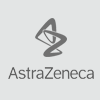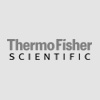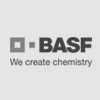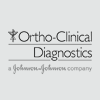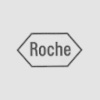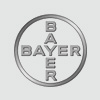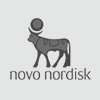Adenovirus Antigen Capture ELISA
The Virusys Adenovirus Hexon Antigen Capture ELISA is a qualitative procedure for the determination of adenovirus hexon antigen in a variety of sample matrices, including feces. The assay is a double antibody (sandwich) ELISA that utilizes a monoclonal anti-adenovirus antibody to capture the antigen from the sample. Following sample incubation, a biotinylated detection antibody is added and this step is followed by HRP-Streptavidin. The presence of hexon antigen is visualized by the addition of an HRP substrate followed by the addition of a stop reagent. The development of color within the well is indicative of the presence of adenovirus hexon antigen in the sample. For quantitative purposes, Virusys offers a separate calibration kit (AK291, Adenovirus Antigen Calibration Kit) which can be used in conjunction with this product to generate a standard curve for quantitative measurement.
Acute diarrheal disease in young children is a major cause of morbidity worldwide and is a leading cause of mortality in developing countries (8). Research has shown that enteric adenoviruses, primarily Ad40 and Ad41, are a leading cause of diarrhea in many of these children, second only to the rotaviruses. (1,3,5-8) These viral pathogens have been isolated throughout the world, and can cause diarrhea in children year round.(1-4) Infections are most frequently seen in children under two years of age,(1-3) but have been found in patients of all ages.(2) Further studies indicate that adenoviruses are associated with 4 - 15% of all hospitalized cases of viral gastroenteritis.(1-8)
Many laboratories use electron microscopy (EM) to detect viruses associated with gastroenteritis (5, 7, 8). Other techniques include direct genome profiling and nucleic acid hybridization, neither of which is rapid or specific (6). Alternatively, ELISA tests using Adenovirus-specific antibodies have been shown to be a sensitive (9) , specific, and rapid methods for the detection of enteric adenoviruses(6).
The test kit incorporates proprietary diluents that are designed to prevent the development of nonspecific signal derived from complex sample matrix effects and/or the nonspecific adsorption of reactive test components which result in improvements in both sensitivity and specificity. The kit is available in a standard photometric detection format (AK290-2 or AK290-5).
The kit has been tested against a variety of adenovirus subtypes for sensitivity and potentially interfering viruses and bacteria for specificity.
![]() AK290 Adenovirus ELISA Insert - 2 plate.pdf
AK290 Adenovirus ELISA Insert - 2 plate.pdf
![]() AK290 Adenovirus ELISA Insert - 5 plate.pdf
AK290 Adenovirus ELISA Insert - 5 plate.pdf
- Wadell, G. Laboratory Diagnosis of Infectious Diseases : Principles and Practices. New York : Springer-Verlag, Volume II, 1988. Pg 284-300.
- Hierholzer, John C. Manual of Clinical Microbiology. Washington D.C.: ASM Press, 1995. Pg. 947-955.
- Wood, D. J. “Adenovirus gastroenteritis.” British Medical Journal, Jan. 1988; 296: 229-230.
- Grimwood, Keith, R. Carzino, G. Barmes, and R. Bishop. “Patients with Enteric Adenovirus Gastroenteritis Admitted to an Australian Pediatric Teaching Hospital from 1981 to 1992.” Journal of Clinical Microbiology, Jan 1995; 33(1):131-136.
- Wood, D. J. and A. S. Bailey. “Detection of Adenovirus Types 40 and 41 in Stool Specimens by Immune Electron Microscopy.” Journal of Medical Virology, 1987; 21:191-199.
- Nishio, Osamu, M. Ooseto, K. Takagi, Y. Yamasita, Y. Ishihara, and S. Isomura. “Enzyme-Linked Immunosorbent Assay Employing Monoclonal Antibodies for Direct Identification of Enteric Adenoviruses (Ad40,41) in Feces.” Microbiol. Immunol.,1990; 34(10): 871-877.
- Wood, D. J., K. Bijlsma, J. C. de Jong, and C. Tonkin. “Evaluation of a Commercial Monoclonal Antibody-Based Enzyme Immunoassay for Detection of Adenovirus Types 40 and 41 in Stool Specimens.” Journal of Clinical Microbiology, June 1989; 27(6):1155-1158..
- Thomas, Eva. E., D. Roscoe, L. Book,B. Bone, L. Browne, and V. Mah. “The Utility of Latex Agglutination Assays in the Diagnosis of Pediatric Viral Gastroenteritis.” Am. J. Clin. Pathol., 1994; 101:742-746.
- Cheung, Eileen Y., S. Hnatko, H. Gunning and R. Thomas. “Evaluation of combined commercial enzyme-linked immunosorbent assay for detection of rota and adenoviruses for automation.” Journal of Virological Methods, 1990; 30: 333-338.
- Lew, Judy F., et al. “Astrovirus and Adenovirus Associated with Diarrhea in Children inDay Care Settings.” Journal of Infectious Diseases, 1991; 164: 673-678.

